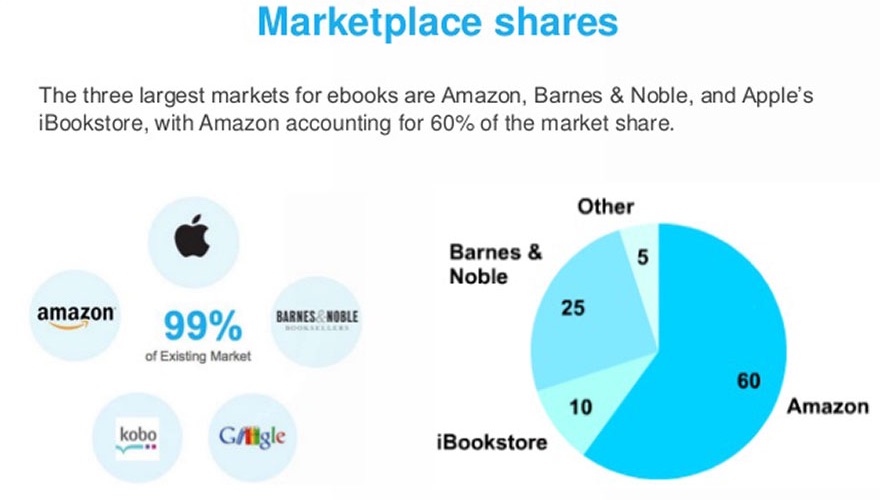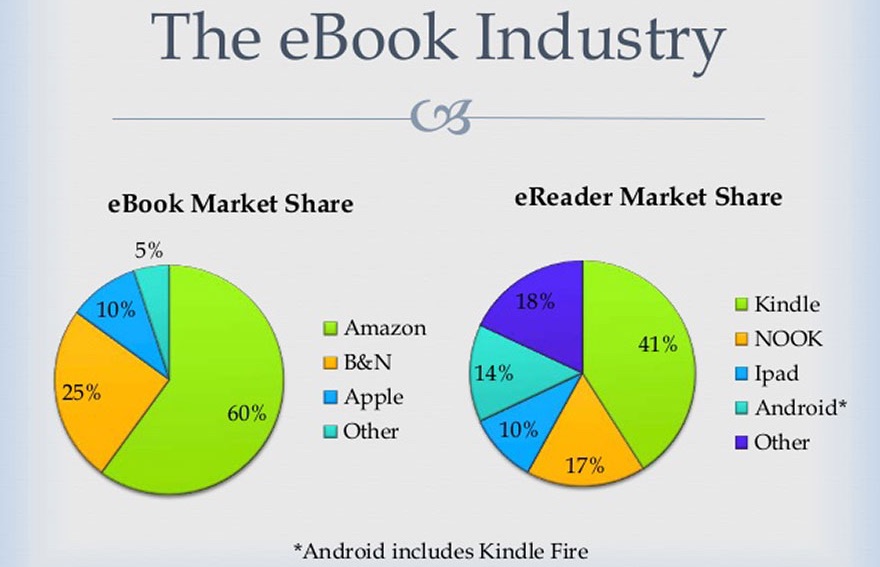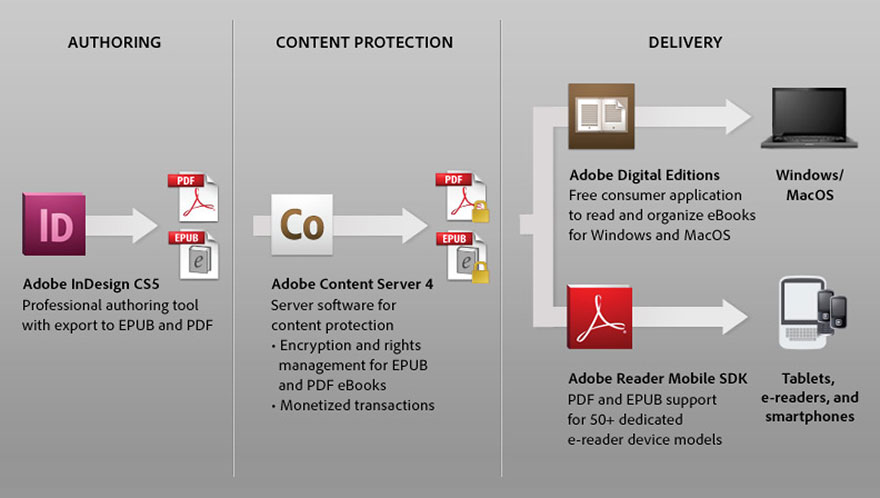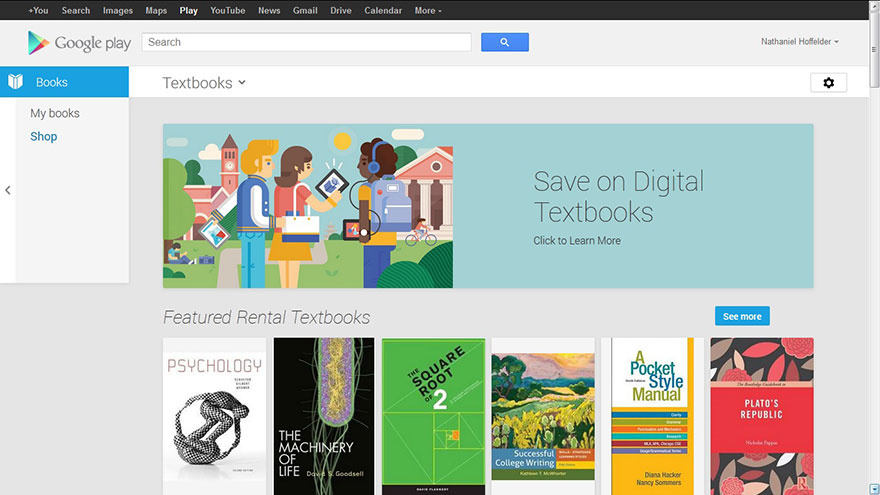News
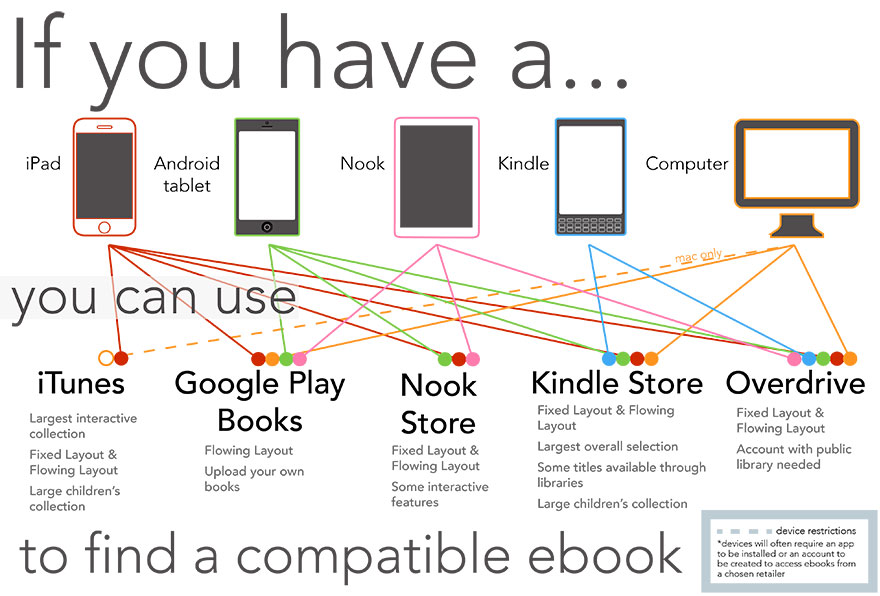
The current and very messy state of digital publishing.
This year we’ll be working on several interesting projects, including a few that involve eBooks. After spending a frustrating amount of time researching “the best current and future-proof publishing formats and platforms” we still have more questions than answers.
The current state of digital publishing looks like an Italian opera or a Mexican telenovela where everybody simultaneously loves and hates one other. While we know there’s almost always a happy ending, we can’t exactly figure out what the outcome will be.
Let’s start with the term multimedia. I have always found this term confusing and somewhat misleading. At least in the photo and video industries “multimedia” is generally used to describe projects where photography and sound, or still images and video, are combined.
But if you think about it, printed books have always used photos or illustrations. The same is true for magazines, websites, posters, and any form of packaging. What makes a slideshow with sound more multimedia than a box of cereal? I don’t know. So, to simplify, we’ll use my friend Peter Krogh’s definition: “Multimedia eBooks means PDFs or EPUBs with embedded videos that are viewed within the body of the book. You simply click to view, without leaving the page you are on.”
A lot has happened in the digital publishing world, with clear milestones such as in 2011 when Netflix boldly announced (and a month later reversed) the separation of their DVD and video streaming services. I believe the overall message is plain as day when a company that started with a traditional pay-per-rental model (and one that delivered a billion DVDs) first transitions to a model that includes a flat-fee and unlimited rentals to a company that specializes in offering streaming video on demand.
In early 2013 major Hollywood studios started to kneel over the dominance of YouTube when DreamWorks bought AwesomenessTV, a company that manages YouTube stars, for $33 million. Several giant old-media companies immediately followed. And just last month, Amazon (originally simply an online bookseller), announced their own “Mozart in the Jungle” web series.
There’s no question in my mind that the short-term future of visual storytelling relies on on-demand video streaming platforms. Video is the new and future public literature. But what about books? For the longest time I’ve debated the pros and cons between printed books and eBooks with my friend, Chicago-based artist Tim Campbell.
Since I started using eBooks I’ve doubled the amount of books I read. Perhaps I am disrupting my sleep and shouldn’t read in bed, but the fact that I can carry dozens or even hundreds of books in my jacket pocket is a powerful experience. Of course, that can also be a bad thing. Today, the average American consumes 34 gigabytes of content and 100,000 words of information in a single day. But that’s another topic for another day. In some instances, digital versions can offer important financial benefits. In 2013, American Airlines replaced its pilot’s manuals (35 pounds of paper) with electronic versions on iPads, saving $1.2 million on fuel per YEAR.
So, as an author and content producer (and sometimes editor), I know this much: multimedia eBooks are the way to go. But which format and platform should we use?
Here’s where the Italian opera and Mexican telenovela come in: When eBooks were introduced in 2007, Amazon launched the Kindle as its distribution method, gained a dominant market position, and took advantage of that position to sell eBooks below cost, often for $9.99. Apple launched the iPad in 2009, and a year later persuaded five of the six major book publishers to adopt the agency model where publishers set their own prices—with Apple taking a 30% cut. In 2012 the Justice Department sued the publishers and Apple for “price fixing.” Last year Apple lost the case and was supposed to pay $450 million in damages. The publishers settled for a total of $166 million. I’m sure we haven’t heard the end of that story yet.
• Devices
The tablet market grew 75% year-on-year in the last quarter. That’s almost 52 million new tables in the hands of potential readers, up from 30 million in Q4 2011.
The iPad dominates 25% of the consumer tablet market. This would immediately tilt the balance toward Apple, but the company’s market share was 40% in 2013 and 70% in 2012. In this context, 25% doesn’t look that promising.
On my wonderful $150 Android tablet, I have the option to buy a book from Amazon, Kobo, Nook, and Google Play – but not from Apple’s iBooks. This might explain why 23% of consumers used a Kindle App to download eBooks in the first nine months of 2014, and another 21% used the Kindle Fire. Apple’s iPad was used by 18% of consumers to download eBooks, while 4% used an iPhone. Barnes & Noble’s Nook had a 9% share of eBook downloads. Samsung is currently partnering with Nook, and we all know that Google can create a tsunami if it really wants to push the eBook on their Google Play. To be honest, these numbers don’t even make sense to me, so don’t kill the messenger.
• Market share
It is extremely hard to get reliable numbers on this, so I’m using data from the most reputable sources.
Amazon currently controls 60% of eBook sales (and nearly 50% of total book sales) in the U.S. In 2010, Amazon had 600,000 e-books in its Kindle store compared to over 3 million digital titles today. In Britain Amazon’s grip on the eBook market is about 78%. Barnes and Noble controls between 15% and 25% depending of the source, and Apple dominates less than 10% of the pie with its iBook platform.
• Formats
Here’s where all hell breaks loose. The EPUB format is the most widely supported vendor-independent XML-based eBook format, including public library systems like New York and Brooklyn, but Amazon’s Kindle does not support EPUB (Kindle uses the KF8 and AZW formats) and there are no desktop EPUB readers that can play videos.
So, even with the EPUB as the most widely supported format, if we need to embed videos (and we all do!) then we need to consider Adobe’s Digital Editions and the PDF format. Sounds pretty simple right? Not so fast. The PDF plays on any computer, and it also works on any iPad or Kindle with a PDF reader. But, as of this writing, we do NOT have iOS or Android apps that can play PDFs with embedded videos! Back to square one.
• Conclusion
As of right now there’s no clear winner when it comes to devices. The market share favors Amazon, but the Kindle App supports everything except EPUB, the most widely supported format.
The good news is small publishers and independent authors now have access to the same tools as huge, traditional publishers. The not so great news is that we might be replacing traditional gatekeepers like Rupert Murdoch, Silvio Berlusconi, and Ted Turner to name a few. To complicate matters, some programs require self-published writers to be exclusive, closing off the possibility of sales through other platforms.
In terms of pricing, the race to the bottom hurts everybody, established publishers and newcomers alike. Amazon usually gives self-published writers 70% of what a book earns, which means a novel selling for $4.99 yields $3.50. Sounds terrible, but unfortunately it is a much larger percentage than what traditional publishers are willing to pay.
• What’s next?
Considering that in 2013 more than 90% of Apple’s $183 billion in revenue came from hardware sales, my guess is that they don’t care that much about iBooks. Amazon has a clear motivation to improve the Kindle app, not only to maintain or increase its dominant market share, but to keep competing with Netflix and other VOD providers. Over 80% of Google’s $64 billion annual revenue comes from advertising, so if there’s a way to monetize ads on eBooks, you can bet they’ll be there. Adobe might also surprise us, with a Digital Editions version that supports video on mobiles devices, but I truly don’t see Apple letting that happen.
What can or should we do right now?
At this point, I don’t have a good answer, so I’m attending “Digital Book World Conference + Expo” in New York City. I’m planning to attend sessions like “Acrobat’s Secret Weapons for Publishers” and “How to Become a Book Graphic Ninja“, hear directly from publishing industry experts, pick their brains, and hopefully get a much clearer picture for all of us. So, stay tuned!

This topic, as pretty much every topic we discuss on this blog, changes rapidly. What seems like a good solution today is quickly replaced by something or someone else. I welcome anyone who wants to join the conversation via Twitter @EA_Photo.
Related Articles:
Are tablets making us better? Yes and no. http://bit.ly/14sbWBp
How to optimize your reading experience. http://bit.ly/1AgDx5T
7 reasons not to buy the Kindle Fire. l http://bit.ly/14sc8AT
How NOT to announce new products. Google Nexus. http://bit.ly/14sccAl
Why Lenovo sucks. http://bit.ly/14scd7D
